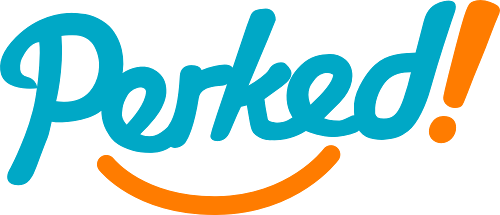Setting effective and meaningful goals with your team gives them clarity of direction, motivates them to overcome challenges, and ultimately, boosts their performance. Applying the growth mindset in developing your team’s goals will help you achieve this.
Stanford professor Dr. Carol Dweck’s research into human motivation unearthed two types of mindsets: growth and fixed. Those with a growth mindset had greater success in overcoming obstacles because they believe that challenges can be conquered by learning new skills, putting in the hard work to develop them, and embracing feedback from others. On the other hand, those with a fixed mindset believe they either possess the talent to accomplish something or they don’t.
Why is a growth mindset important to goal-setting? Imagine your team is rowing a boat.
Your rudder sets your direction.
Your oars are your tools to make progress toward the destination.
Your team’s mindset determines how far you go, how efficient you are in getting to your destination, and how motivated you are to overcome inevitable challenges.
- With a fixed mindset, you might repeatedly row to a familiar island because it’s the farthest you’ve ever gone and presume, based on your team’s current abilities, it’s the farthest that you’ll ever get.
- Adopting a growth mindset, you’re more likely to set your team’s goal to reach a previously thought unreachable destination…say Mars. Yes, planet Mars is a long way away from your normal destination. Yes, it won’t be easy to get there and there’s a chance you’ll fail. But, the reward is enormous. A growth mindset sets the foundation for your resilient team to be able to reach farther.
Research has shown that cultivating a growth mindset in your team improves team cohesion and success, with 47% reporting higher trust with their company and 34% feeling a stronger sense of ownership and commitment to their organization. Embedding a growth mindset in your goal-setting process is crucial to building a strong team foundation.
A Framework for Applying Growth Mindset to Goal Setting
Now, let’s lay down the fundamental building blocks to creating effective goals leveraging the growth mindset:
- Build in Challenges: Setting goals that help your organization maintain the status quo are necessary, but you shouldn’t stop there. In today’s fast-paced world, innovation is happening at lightning speed. So the goals that you set for your team should aim to position your company ahead of the curve. Reach out of your comfort zone and into your growth zone.
- Commit to Learning: Make education and sharing lessons learned a formative part of your team’s foundation. This may come in the form of acquiring new skills or learning how to perform current duties more efficiently.
- Learn from Failure and Adapt Quickly: View failure as an opportunity to try again with the skills you gained and feedback you obtained from the previous attempt.
Next, let’s apply this framework and discuss three practical strategies you can use when creating goals for yourself and your team members.
Three Strategies for Effective Goal Setting using the Growth Mindset
1. Embrace Learning Goals
Goals are inherently focused on bringing about change. But sometimes we become so focused on the desired outcome we forget about what we need to get there. If it seems that your team is consistently missing the mark on a given goal, it may not be due to their performance. You might be setting the wrong kind of goal.
There are two kinds of goals: performance goals and learning goals.
- Performance goals are focused on the end result.
- Learning goals are focused on acquiring the skills it takes to reach the goal.
For example, if you want to lift a 150-pound weight, but you haven’t lifted weights before, that weight likely won’t budge from the floor. Essentially, you’ve set yourself up for failure. This is where learning goals fit in. Set a goal to be proficient in three new exercises that help you properly engage your lower body muscles. As you build stronger muscles, you are proactively laying the foundation towards your journey to lifting 150-pounds. To be clear, this doesn’t mean that learning goals are “easy”, in fact they should be challenging. The main difference is that the focus is on acquiring new skills or knowledge.
2. Experiment with Stretch Goals
Stretch goals are big, ambitious goals that foster inspiration in your employees. A key tenet of the growth mindset is embracing challenges and seeing them as an opportunity to learn and grow in novel ways.
Jim Collins, author of “Built to Last: Successful Habits of Visionary Companies”, calls them “Big, Hairy, Audacious Goals” or BHAGs. John Doerr, the father of Objectives and Key Results (OKRs), calls these “Aspirational” OKRs or “moonshots”, compared to “Committed” OKRs which an organization is more than capable of achieving.
Google has had success with this tactic for years. Leaders at Google are known to set goals that are just outside the realm of possibility. Google’s key learning has been that these goals tend to attract the best talent and create an exciting work environment that aligns everyone towards a common goal.
So, are stretch goals right for you? In 2011, Michael Lawless and Andrew Carton wrote an award-winning article in the Academy of Management Review about when stretch goals work and when they don’t. They identified two factors to consider:
- Recent Performance – Employees who have experienced recent success are more likely to see stretch goals as an opportunity (not a threat) and demonstrate strategic flexibility.
- Resource Availability – Organizations that are well-resourced are typically better equipped to absorb failure that are an inevitable part of trying new and bold ideas.
3. Focus on the Journey, Not just the Outcome
Setting your team members up for success starts with setting goals that not only provide a clear picture of where they are going (their destination), but also shows them how they are going to get there.
Enter OKRs. Objectives and Key Results (OKRs) is a widely used agile goal management system that allows team members to focus on the destination without losing sight of the journey.
Objectives are the overarching goal(s) that your team is setting out to achieve. Key Results are the checkpoints along the way that tell your team they’re on the right path. These are easily measured and focused on driving results.
Setting and Achieving Goals with A Growth Mindset
Goals created with a growth mindset provide a blueprint for your team to achieve more and journey further. Experiment with growth mindset goal-setting this year and extend the realm of possibility for you and your team.
Key Learnings
- Why is a growth mindset important to setting goals? Like rowing a boat, your team’s mindset determines how far you go, how efficient you are in getting to your destination, and how motivated you are to overcome inevitable challenges.
- What are key building blocks to look for when applying a growth mindset to goal setting? Build in challenges. Commit to learning. Learn from failure and adapt quickly.
- How to put this into action? Three key strategies include embracing the use of learning goals, experimenting with stretch goals, and leveraging OKRs to focus on the journey (not just the outcome).

